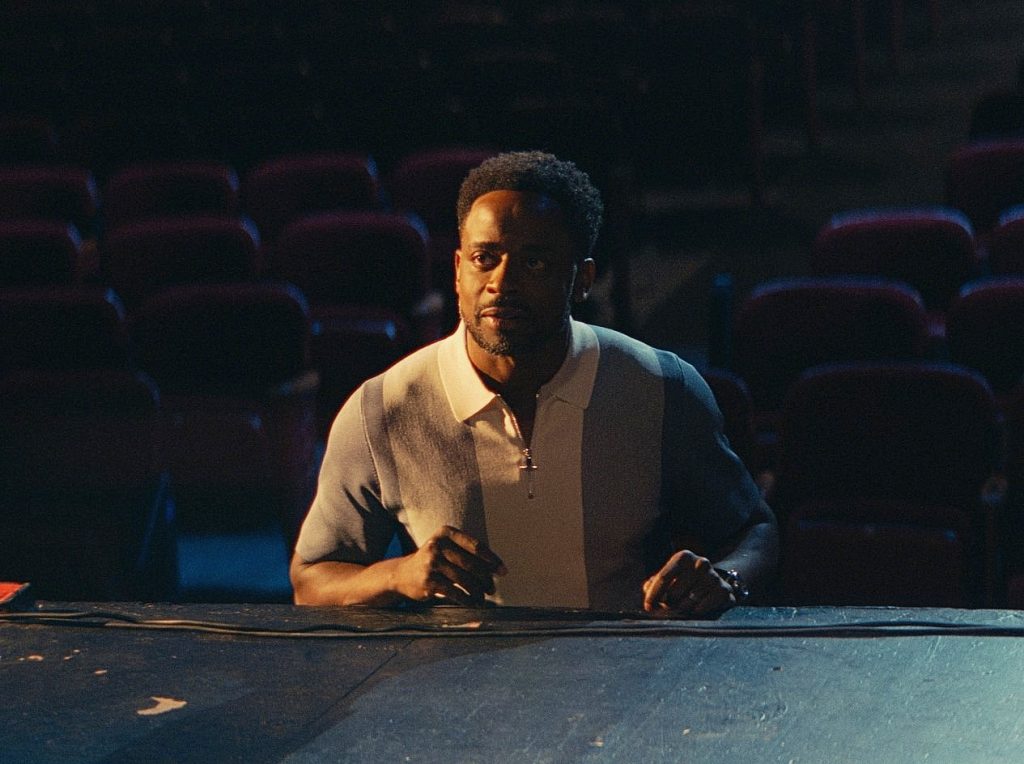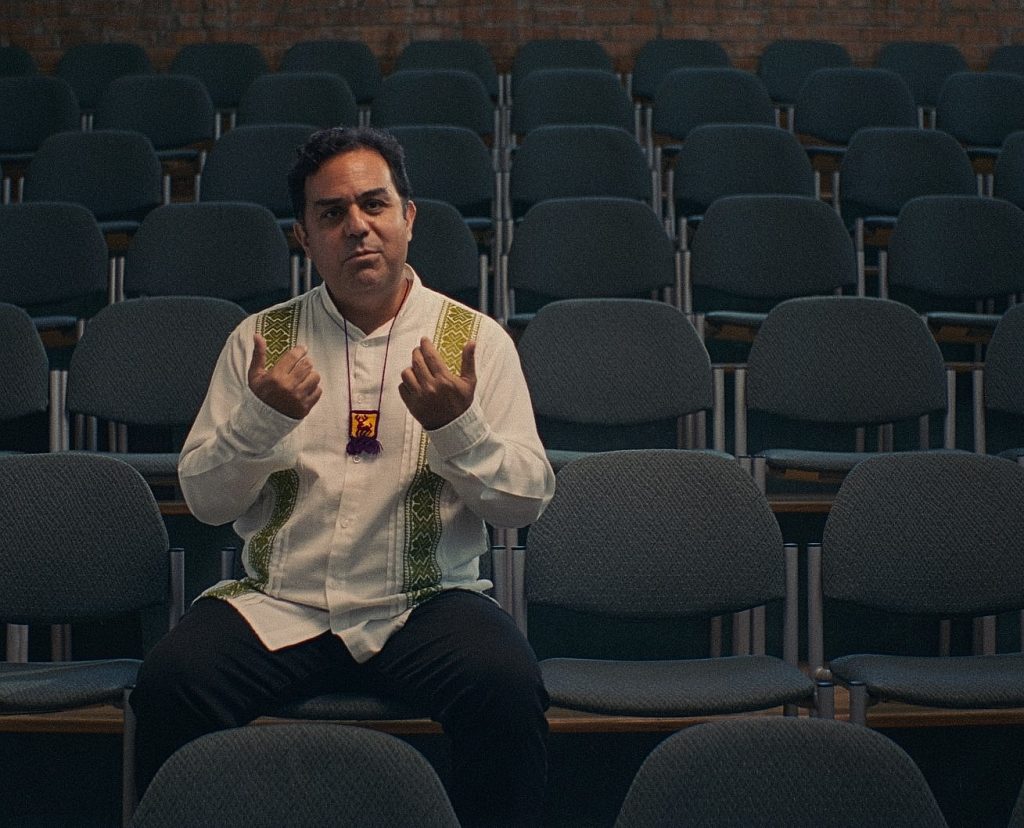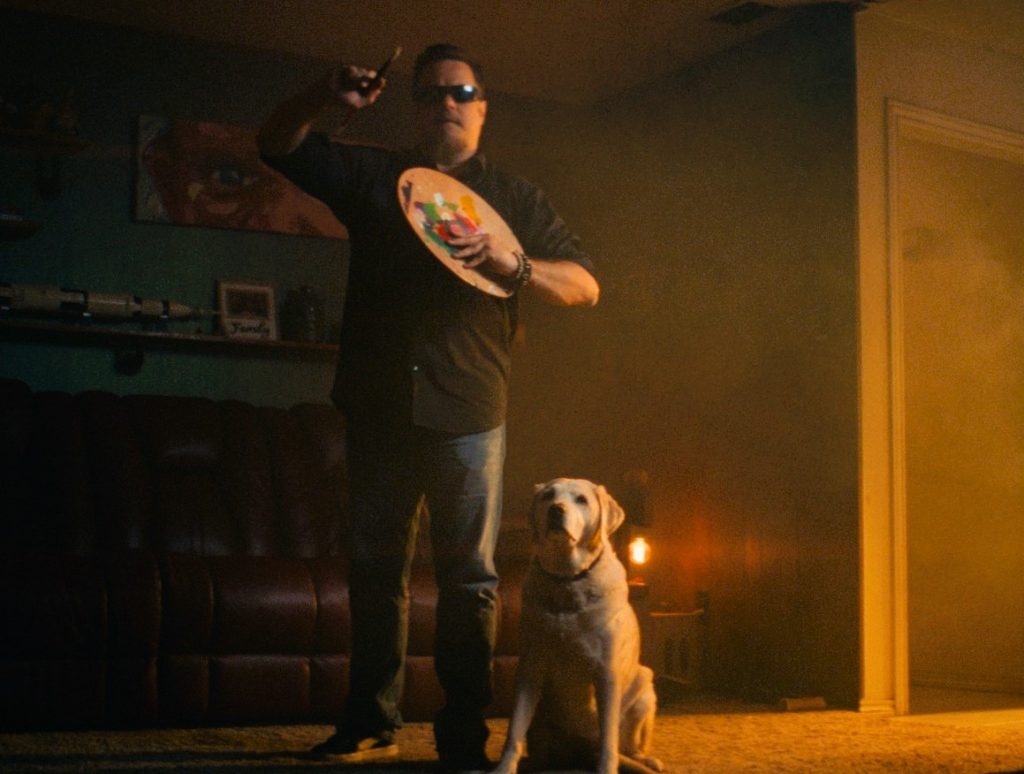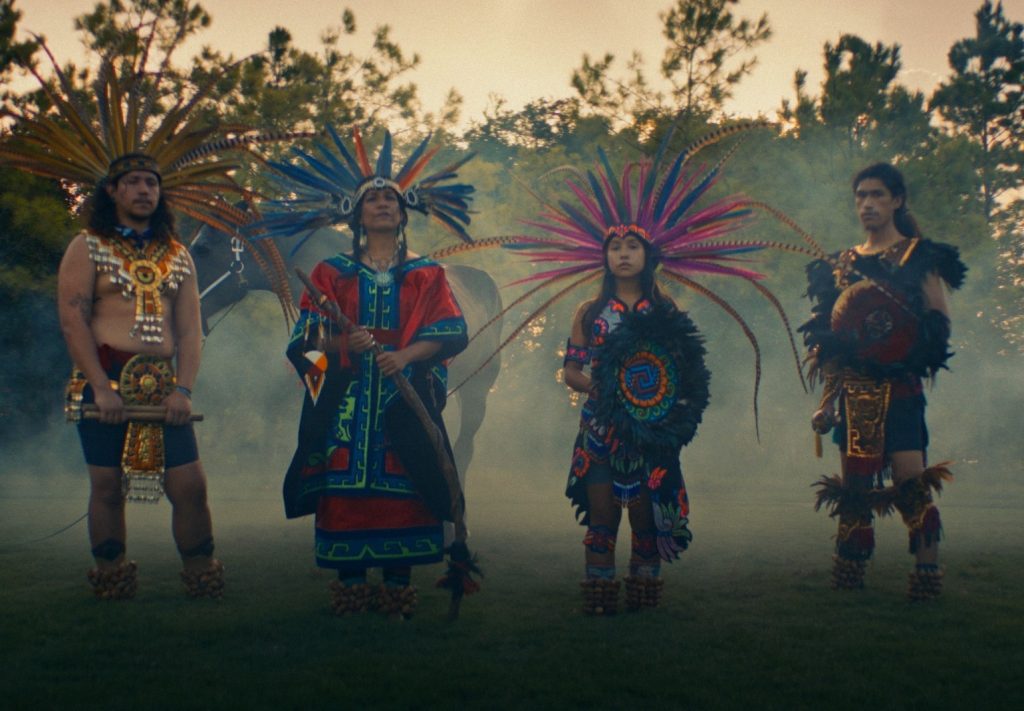
The four-part PBS series, The Express Way with Dulé Hill finds its host, TV actor-dancer Dulé Hill — best known for Psych and The Wonder Years — traveling the country. And for tonight’s episode, he came to Texas.
The series sought out different dancers, musicians, actors and painters with the aim of exploring how these artists and their groups connect to their communities by pursuing their very individual talents: a traditional lute maker who works with addicts, a LGBTQ mariachi band. Or how they’ve pursued their gifts despite considerable obstacles: a deaf dancer, a blind painter.
Tonight’s episode of The Express Way features Cara Mia Theatre‘s executive artistic director David Lozano in Dallas, visually impaired painter John Bramblitt in Denton and Abuela M’api Rainflowa, who teaches traditional Aztec dance and leads an indigenous troupe in Houston.
A tap dancer himself, Hill said his original idea was an entire series just on dance. But director Danny Lee convinced him to “widen the lens — and that’s when the lights really came on.”

Texas is the show’s third location, after California and Appalachia. Hill explained the logic behind the choice of artists and arts companies: They wanted to tell these particular stories “because art is so impactful. I think oftentimes we don’t really acknowledge the value that art plays on our humanity, on our connectivity, on our community, and how it affects lives day in and day out.”
In short, the artists are inspiring. That’s either because they’ve overcome personal, even physical difficulties or are preserving or reviving their community’s culture or history. Or they’re taking that artistry in a new direction.
“I was chomping at the bit to highlight these stories,” Hill said, “because there is a diversity there, and that’s the beauty of it. We often think that you have to be on some great mountaintop to have your art affect somebody. You have to be George Clooney or Angelina Jolie or Angela Bassett. And really, we all have our unique gifts, and the more we tap into that, the more we celebrate that, it allows us to connect to each other, and it allows us to have a better society.”
In the case of Cara Mia Theatre, the focus is on their play, Crystal City 1969. It’s about a historic, high school walk-out triggered by the widespread mistreatment of Spanish-speaking students in Texas. The drama was an early effort by Cara Mia and has been a popular one, revived several times.

But The Express Way focuses on a particular, recent evening at the Texas Theatre in Oak Cliff, when some of the original student-activists, now grown up, watched their own story unfold.
So why that moment?
“I think,” Hill said, “oftentimes when we see theater, we can sometimes feel that that’s just a story. But when you have the actual people there, you realize it’s deeper than a story. It is art imitating life. But it is life. To see the strength and the fortitude of the students and to be able to hear the story even now, it’s encouraging and strengthening. But it also highlights the power of theater because without being able to tell that story, that story may cease to exist. That history can easily go away.”
John Bramblitt, the visually impaired painter in Denton, started to lose his eyesight when he was 11 because of epilepsy. He has been called “the first blind muralist in the world,” having murals in both New York and Dallas. But it took him years of trial and error, using fabric paint, a computer program, even feeling the faces of his portrait subjects.
To reproduce some of his achievement for others, Bramblitt conducts a workshop in the episode and Hill joins it.
The participants are blindfolded and try to do what Bramblitt does: feel the different paint colors with their fingers, picking them out because of the different ingredients added to each color — like corn starch. (Bramblitt also has braille labels on his paint tubes to help differentiate them.)

“I wish I could tell you how it worked,” Hill said, “because I tried.” He laughed. “And if you see my painting, it was – it was not a John Bramblitt. It really is amazing to me how people can develop skills and senses to accomplish things. John Bramblitt truly represents that because not being able to see but also being able to see — it expands the mind because to be able to tell the difference between this paint and that paint just by the touch. I mean, I still don’t know how he does it because it was not easy.”
Hill also participates onscreen with Abuela M’api Rainflowa, the indigenous dancer-teacher in Houston who founded Houston Aztec Dance and Drum.
“Aztec dancing is a form of heightened meditation,” she tells Hill. “The dances move our spirit to connect with the land.”
Rainflowa grew up Catholic and believed she was of Mexican descent. She learned only later she’s indigenous. And so she’s studied the traditional costumes, ceremonies and dances in an effort to re-connect with her past and to pass that cultural knowledge to others.
“Aztec dancing is a form of heightened meditation,” she tells Hill. “The dances move our spirit to connect with the land.”
We see the troupe practicing and performing in Moody Park in Houston, which she calls “our home base park.” And Hill joins them in a sweat lodge ceremony and to learn the Aztec Sun Dance — which takes some effort.
“Yeah, the Houston humidity is not anything to play with,” Hill said with a laugh. “And if you think you are in shape, it’s going to let you know that you still have work to do. But to dance with them was truly an honor I enjoyed. Stepping into a dance form that I was not familiar with — I think is a good thing. I think we need to do that more often. We can grow from it.”
As for what ordinary viewers might learn from artists with such highly developed skills and such talents, Hill said, “So much of this social media age is about being like everybody else. ‘This is what beauty is.’ ‘This is what talent is.’ ‘This is what success looks like.’ And I feel that Express Way’s kind of deconstructing that to say, no, success is what is successful to you. A gift is what is a gift to you. And as long as you hold on to that, that is how you make a difference in this world.”
– Tonight’s episode is at 8 pm on KERA TV. There is one more episode of The Express Way with Dulé Hill to be released. In it, he goes to Chicago.




